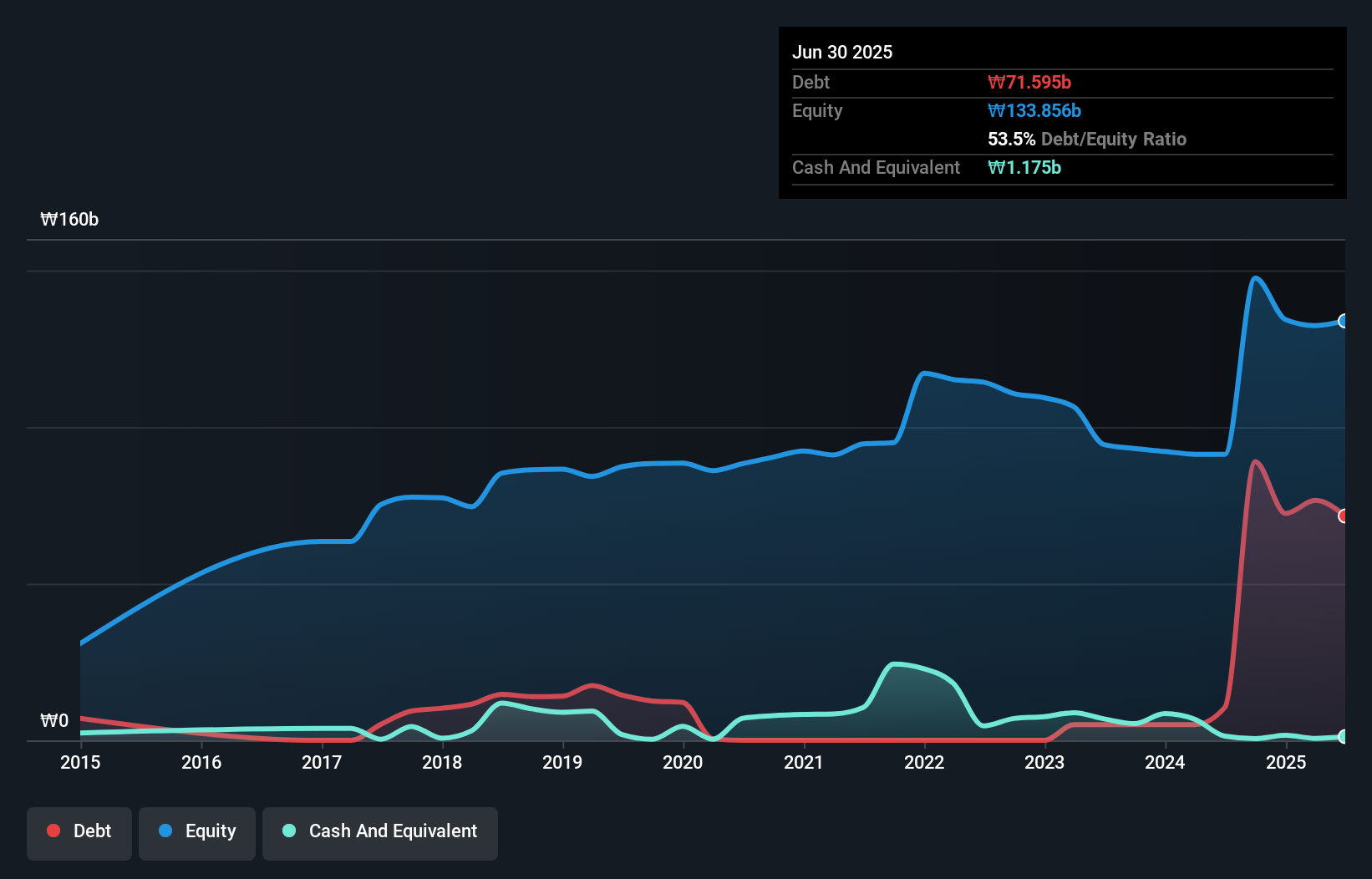- South Korea
- /
- Basic Materials
- /
- KOSDAQ:A198440
Kangdong C&L (KOSDAQ:198440) Takes On Some Risk With Its Use Of Debt
Warren Buffett famously said, 'Volatility is far from synonymous with risk.' When we think about how risky a company is, we always like to look at its use of debt, since debt overload can lead to ruin. We note that Kangdong C&L Co., Ltd. (KOSDAQ:198440) does have debt on its balance sheet. But is this debt a concern to shareholders?
What Risk Does Debt Bring?
Generally speaking, debt only becomes a real problem when a company can't easily pay it off, either by raising capital or with its own cash flow. Ultimately, if the company can't fulfill its legal obligations to repay debt, shareholders could walk away with nothing. However, a more usual (but still expensive) situation is where a company must dilute shareholders at a cheap share price simply to get debt under control. Having said that, the most common situation is where a company manages its debt reasonably well - and to its own advantage. The first step when considering a company's debt levels is to consider its cash and debt together.
What Is Kangdong C&L's Net Debt?
You can click the graphic below for the historical numbers, but it shows that as of June 2025 Kangdong C&L had ₩71.6b of debt, an increase on ₩10.5b, over one year. Net debt is about the same, since the it doesn't have much cash.

A Look At Kangdong C&L's Liabilities
The latest balance sheet data shows that Kangdong C&L had liabilities of ₩154.9b due within a year, and liabilities of ₩147.0b falling due after that. On the other hand, it had cash of ₩1.18b and ₩8.33b worth of receivables due within a year. So its liabilities outweigh the sum of its cash and (near-term) receivables by ₩292.4b.
This deficit casts a shadow over the ₩61.1b company, like a colossus towering over mere mortals. So we'd watch its balance sheet closely, without a doubt. After all, Kangdong C&L would likely require a major re-capitalisation if it had to pay its creditors today.
View our latest analysis for Kangdong C&L
In order to size up a company's debt relative to its earnings, we calculate its net debt divided by its earnings before interest, tax, depreciation, and amortization (EBITDA) and its earnings before interest and tax (EBIT) divided by its interest expense (its interest cover). The advantage of this approach is that we take into account both the absolute quantum of debt (with net debt to EBITDA) and the actual interest expenses associated with that debt (with its interest cover ratio).
While Kangdong C&L's debt to EBITDA ratio (3.8) suggests that it uses some debt, its interest cover is very weak, at 1.6, suggesting high leverage. So shareholders should probably be aware that interest expenses appear to have really impacted the business lately. However, the silver lining was that Kangdong C&L achieved a positive EBIT of ₩9.4b in the last twelve months, an improvement on the prior year's loss. There's no doubt that we learn most about debt from the balance sheet. But it is Kangdong C&L's earnings that will influence how the balance sheet holds up in the future. So if you're keen to discover more about its earnings, it might be worth checking out this graph of its long term earnings trend.
Finally, a company can only pay off debt with cold hard cash, not accounting profits. So it is important to check how much of its earnings before interest and tax (EBIT) converts to actual free cash flow. Happily for any shareholders, Kangdong C&L actually produced more free cash flow than EBIT over the last year. There's nothing better than incoming cash when it comes to staying in your lenders' good graces.
Our View
To be frank both Kangdong C&L's interest cover and its track record of staying on top of its total liabilities make us rather uncomfortable with its debt levels. But at least it's pretty decent at converting EBIT to free cash flow; that's encouraging. Looking at the bigger picture, it seems clear to us that Kangdong C&L's use of debt is creating risks for the company. If everything goes well that may pay off but the downside of this debt is a greater risk of permanent losses. When analysing debt levels, the balance sheet is the obvious place to start. But ultimately, every company can contain risks that exist outside of the balance sheet. Case in point: We've spotted 2 warning signs for Kangdong C&L you should be aware of, and 1 of them is concerning.
When all is said and done, sometimes its easier to focus on companies that don't even need debt. Readers can access a list of growth stocks with zero net debt 100% free, right now.
Valuation is complex, but we're here to simplify it.
Discover if Kangdong C&L might be undervalued or overvalued with our detailed analysis, featuring fair value estimates, potential risks, dividends, insider trades, and its financial condition.
Access Free AnalysisHave feedback on this article? Concerned about the content? Get in touch with us directly. Alternatively, email editorial-team (at) simplywallst.com.
This article by Simply Wall St is general in nature. We provide commentary based on historical data and analyst forecasts only using an unbiased methodology and our articles are not intended to be financial advice. It does not constitute a recommendation to buy or sell any stock, and does not take account of your objectives, or your financial situation. We aim to bring you long-term focused analysis driven by fundamental data. Note that our analysis may not factor in the latest price-sensitive company announcements or qualitative material. Simply Wall St has no position in any stocks mentioned.
About KOSDAQ:A198440
Imperfect balance sheet with very low risk.
Market Insights
Community Narratives



